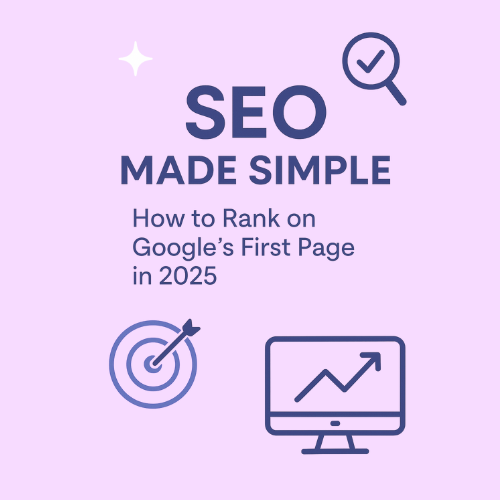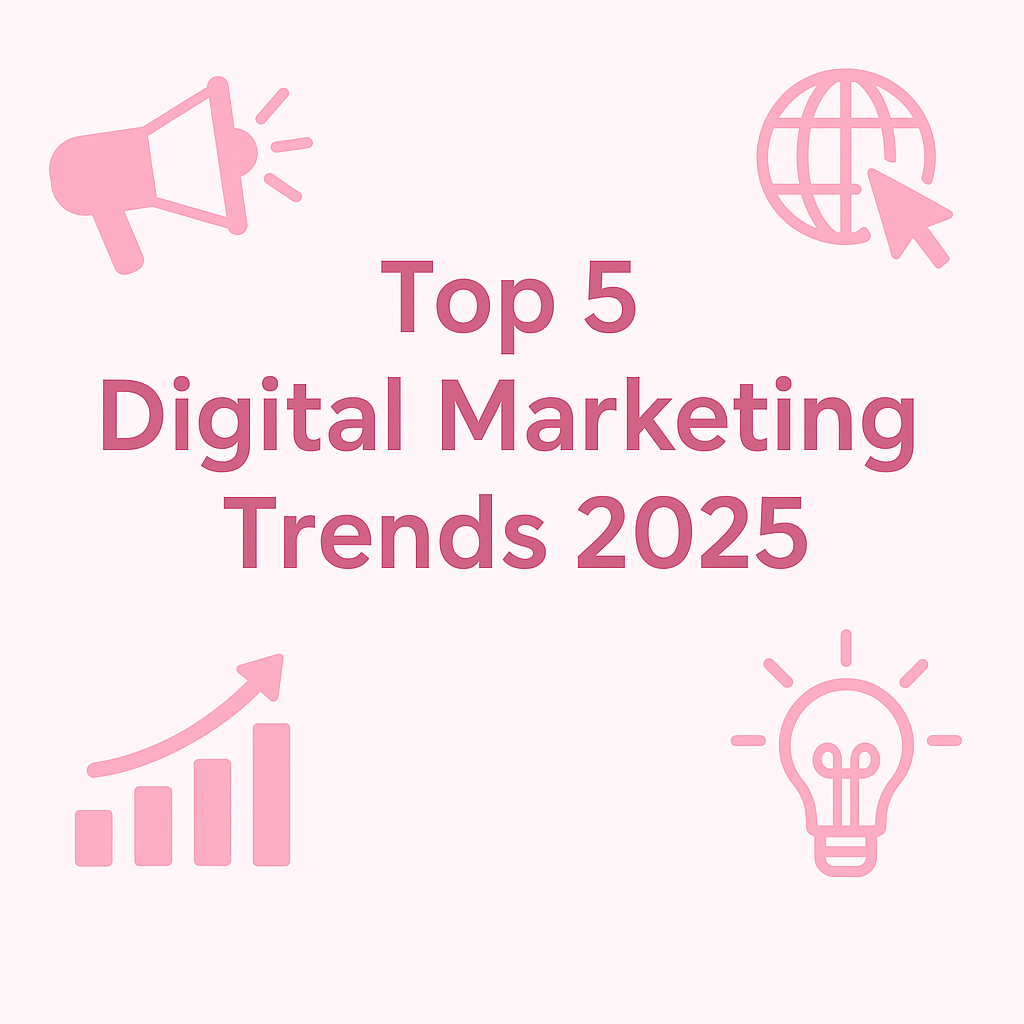SEO Made Simple — How to Get Your Website on Google’s First Page
Introduction If your business isn’t showing up on the first page of Google, you’re missing out on one of the most powerful sources of organic traffic. With over 90% of online experiences beginning with a search engine, SEO (Search Engine Optimization) has become a non-negotiable part of any digital marketing strategy. But the good news is, SEO doesn’t have to be complicated. This beginner-friendly guide breaks it down into simple, actionable steps—so even if you’re just starting out, you can begin ranking on Google and driving traffic to your website 1. What is SEO and Why Does It Matter? SEO is the process of optimizing your website so it appears higher on search engines like Google when people look for products, services, or information related to your business. When your site is optimized properly, it can attract free, long-term, and highly targeted visitors without spending money on ads. In 2025, with competition tougher than ever, SEO is your chance to stand out organically. Did you know the first result on Google gets more than 30% of all clicks? That kind of visibility can turn casual browsers into loyal custome 2. Keyword Research – The Foundation of SEO Before you write content or update your site, you need to know what people are actually searching for. This is where keyword research comes in. Tools like Google Keyword Planner, Ubersuggest, and AnswerThePublic can help you discover terms your audience is already typing into Google. Instead of focusing on short and competitive keywords like “digital marketing,” go for long-tail keywords such as “affordable digital marketing for small businesses.” These are easier to rank for and more specific, which means better quality traffic. Keywords are the bridge between what users want and what your content delivers. Choosing the right ones ensures your content shows up when and where it matters most. 3. On-Page SEO – Optimize What You Control On-page SEO is everything you do directly on your website to improve your chances of ranking. Start with a keyword-rich title that accurately reflects what your page is about. Write a compelling meta description that appears on search engine results—this helps improve click-through rates. Use your main keyword within the first 100 words of your content and throughout the page naturally. Don’t forget to add internal links to other pages of your site to keep visitors engaged longer, and use alt text for every image to help with accessibility and image SEO. If you’re on WordPress, plugins like Yoast SEO or Rank Math can guide you step-by-step to ensure your pages meet best SEO practices. 4. Off-Page SEO – Build Trust Through Backlinks Off-page SEO refers to activities outside your website that improve your search engine rankings—mainly backlinks. Backlinks are when other websites link to yours, signaling to Google that your site is trustworthy and authoritative. The best ways to get backlinks include writing guest posts for industry blogs, collaborating with other creators, listing your business in relevant directories, and creating shareable content like infographics or tools. The more high-quality backlinks you earn, the higher your chances of ranking above competitors in search results. In 2025, Google’s algorithm puts a heavy emphasis on domain authority and link quality—so aim for backlinks from reputable, niche-relevant sites instead of spammy directories. 5. Avoid These Common SEO Mistakes Even small mistakes can hurt your rankings. Keyword stuffing—cramming your content with too many keywords—can make your writing unreadable and get you penalized. Slow-loading websites frustrate users and lead to high bounce rates. Not being mobile-friendly in 2025 is a deal-breaker, as Google now prioritizes mobile-first indexing. Also, broken links (both internal and external) hurt your site’s credibility. Publishing low-quality content that lacks value or originality won’t get you anywhere—Google now prioritizes helpful, people-first content over keyword-focused fluff. Avoiding these errors and improving site speed, content quality, and user experience can have an immediate impact on your rankings. 6. Monitor and Improve Your SEO Performance SEO is not a one-time task—it’s an ongoing process. Regularly tracking your performance allows you to identify what’s working and where improvements are needed. Use Google Analytics to understand where your traffic comes from and how users interact with your site. Google Search Console shows which keywords you’re ranking for, pages that need improvement, and any indexing issues. For more detailed insights, tools like SEMrush or Ahrefs offer competitor analysis, backlink tracking, keyword rankings, and technical SEO audits. These tools might be paid, but they provide invaluable data for serious growth. Remember: SEO takes time. You may not see major results in a week—but with consistent effort, your traffic will grow steadily and sustainably. Conclusion Ranking on the first page of Google might seem like a dream, but with the right SEO strategy, it’s absolutely achievable—even for beginners. Focus on researching the right keywords, optimizing your pages properly, earning quality backlinks, and avoiding common pitfalls. Monitor your performance regularly, and continue refining your strategy. In the digital world of 2025, the businesses that win are the ones that show up when their audience needs them most. Let SEO be your gateway to visibility, traffic, and long-term success.



